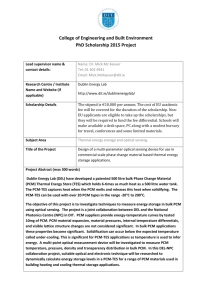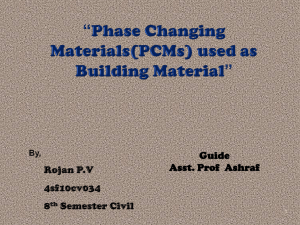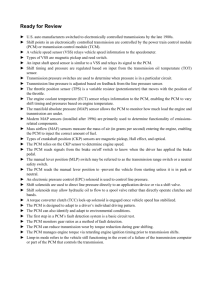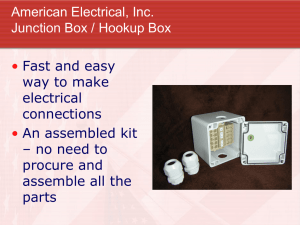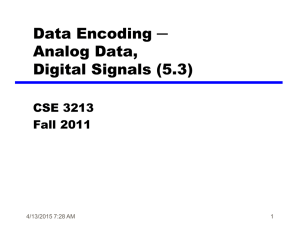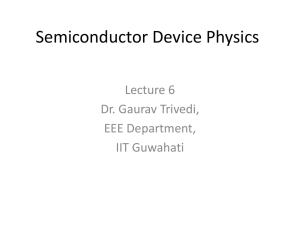LED Final - Eilat Eilot Renewable Energy
advertisement
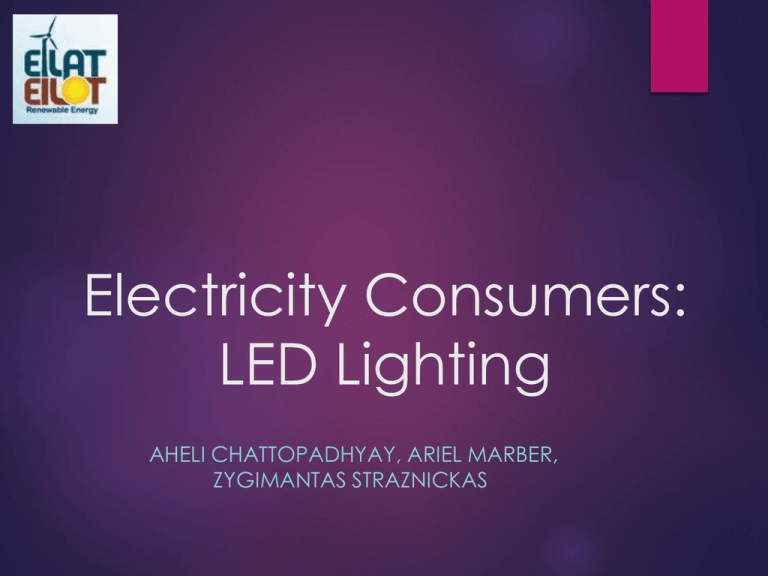
Electricity Consumers: LED Lighting AHELI CHATTOPADHYAY, ARIEL MARBER, ZYGIMANTAS STRAZNICKAS Background: What is an LED? Advantages of LED Lighting Ultra-long lifetime No toxic mercury content No UV or IR radiation Small size Digitally controllable Fast-changing light intensity LED Applications for a Home Replace incandescent and fluorescent light bulbs in homes Light sensors – responding to changing light levels TV - more dynamic images Outdoor lighting – for gardening Problem LED lighting tends to have a high junction temperature, or operating temperature. Relative Light Flux Relationship Between Junction Temperature and Lifetime Lifetime Junction Temperature 74 C Junction Temperature 64 C Relative Light Flux Light Flux vs. Junction Temperature Junction Temperature (C) Goal / Purpose To increase LED efficiency by reducing LED junction temperature through the use of: - aluminum nitride (AIN) substrate - Phase-Change Material (PCM) - aluminum heat sink . Why AlN? Laser AlN Al Why Phase Changing Material? PCMs use the heat given off by semiconductors to melt a solid to a liquid. The melting point temperature is maintained as heat is added and the phase change occurs. Why a Heat Sink? A heat sink is a passive heat exchanger that cools a device by dissipating heat into surrounding air. By releasing heat, a heat sink can accelerate the freezing process when liquid PCM turns back into solid PCM. Standard LED Cooling Our Design: PCM-cooled LED Using AlN Substrate and Heat Sink Efficiency Related to Cost Paraffine PCMs, AlN, and Al come at low cost Although these lights are more expensive, the high upfront cost is compensated by improvement of LED lifetime. All three components might not be necessary to lower-power LEDs. Conclusion The use of AlN substrate, PCM cooling, and a heat sink in a single system can: 1) decrease the junction temperature of the LED 2) improve the lifetime of the LED 3) improve LED efficiency (by up to 20 %) 4) be economically feasible References http://ledsmagazine.com/features/2/5/8 2010 Philips solid-state lighting solutions, Inc. Evaluating Light Output Technical brief (Philips) U.S. Department of Energy Acknowledgements A special thank you to the advisors, Dr. Mark Geller and Dr. Eli for their feedback and guidance. PCM LED Cooling Parameters of the Led: Led power consumption is 80 W Input voltage is 220 V Junction temperature is 650C Dimension is 370*285*195 mm Typical parameters of the PCM material: Melting point is 300C Specific latent heat is 200 kJ/kg Thermal conductivity is 0.3 W/m0C Density is 850 kg/m3 Specific heat capacity is 2200 J/kg0C The estimations were provided for NIBBE Led Model: NBFDL02-80 of SHENZEN NIBBE TECHNOLOGY CO., LTD Calculations The mass of the PCM equal: m = ρ*V, where ρ is PCM density, V is PCM volume. m = (.37*.285*.195)*850 = 17.5 kg The input power P = 80*08 = 64 W (80% of the led power transforms to the heat). The melting time of the PCM is: t = 17.5*250000/64 = 19 hours It means that in above mentioned case during 19 hours the temperature in the pcm material300C. The junction temperature can be easy estimated if we know the heat resistance junction to case: Tj =Tc + P*R, where R is heat resistance in 0C/W, Tc is case temperature. For example if R = 0.1 0C/W the junction temperature will be 360C. 5 kg of PCM is needed for the LED to operate for 4.5 h


